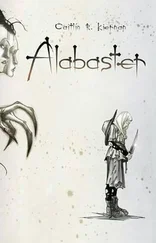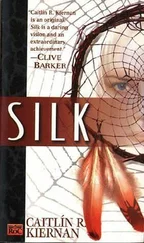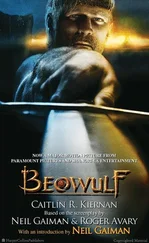Caitlin R. Kiernan - The Red Tree
Здесь есть возможность читать онлайн «Caitlin R. Kiernan - The Red Tree» весь текст электронной книги совершенно бесплатно (целиком полную версию без сокращений). В некоторых случаях можно слушать аудио, скачать через торрент в формате fb2 и присутствует краткое содержание. Жанр: Ужасы и Мистика, на английском языке. Описание произведения, (предисловие) а так же отзывы посетителей доступны на портале библиотеки ЛибКат.
- Название:The Red Tree
- Автор:
- Жанр:
- Год:неизвестен
- ISBN:нет данных
- Рейтинг книги:3 / 5. Голосов: 1
-
Избранное:Добавить в избранное
- Отзывы:
-
Ваша оценка:
- 60
- 1
- 2
- 3
- 4
- 5
The Red Tree: краткое содержание, описание и аннотация
Предлагаем к чтению аннотацию, описание, краткое содержание или предисловие (зависит от того, что написал сам автор книги «The Red Tree»). Если вы не нашли необходимую информацию о книге — напишите в комментариях, мы постараемся отыскать её.
The Red Tree — читать онлайн бесплатно полную книгу (весь текст) целиком
Ниже представлен текст книги, разбитый по страницам. Система сохранения места последней прочитанной страницы, позволяет с удобством читать онлайн бесплатно книгу «The Red Tree», без необходимости каждый раз заново искать на чём Вы остановились. Поставьте закладку, и сможете в любой момент перейти на страницу, на которой закончили чтение.
Интервал:
Закладка:
And, as long as I’m typing this, I may as well also include this, from ms. pages 3–5:
In this case, my personal introduction to the curious and often grisly lore surrounding the ‘Red Tree of Barbs Hill’ is the odd story of William Ames, second son of a wealthy English merchant. Following his father’s death, Ames emigrated from Weymouth to Boston in 1832, seeking his fortune in America. He soon found himself in Providence, having invested a considerable portion of his inheritance in one of the many new cotton mills springing up across New England in the wake of Samuel Slater’s refinements to the design of the water-powered spinning mill (1793). By all accounts, this enterprise was a great success, securing Ames a position among the city’s industrial elite. It is something of a mystery, then, why, in October 1836, William Ames sold his interest in the mill to his partners, having decided, instead, to try his hand at agriculture in the western part of the state. He purchased a large tract of land just south of Moosup, and built a house there on the foundation of an older house (indeed, the very same house in which I am composing this book).
There is little information regarding Ames’ life after his departure from Providence, though it seems that his farming endeavors met with far less success than his milling venture. He married a local woman, Susan Beth Vaughan of Foster, in 1838, but their marriage was to be a short and troubled one. Unable to bear her husband children, Susan Ames became a distant, melancholy, and sickly woman, and in August 1840, William woke one morning in an empty bed to discover that his wife had vanished from their home. An extensive search of the surrounding countryside was organized, but failed to turn up any evidence of her whereabouts or fate. There was a rumor that Susan had run away with a whisky salesman from Philadelphia, but Ames dismissed this story, insisting that he could hear his wife calling out to him at night. He reported that her plaintive cries were especially distinct near an old oak growing on the property, and a second, smaller search party was organized. Again, no trace of the woman was found, and despite her husband’s persistant claims, no one else was able to hear her nightly wailing but William Ames.
According to an account of his death, “Horror from Moosup Valley,” published in the Providence Journal, Ames also reported a “great wild beast, larger than any wolf or panther” roaming about his property, which left “scat and terrible marks from its talons” on his doors. The creature was seen more than once (but only by Ames) in the company of a woman he believed to be Susan Ames. Finally, less than a month after his wife’s disappearance, the farmer and former mill owner’s body was found beneath the same oak where he’d reported to his neighbors having so clearly heard Susan calling out to him for help. His corpse was mauled almost beyond recognition and had been partly eaten, and a subsequent hunt for his killer ended when a young timber wolf was shot just south of Ames’ property. Its belly was opened, but the Providence Journal article fails to record if human remains were found therein, stating only that the locals were “satisfied” they’d found the culprit responsible for the deaths of both Ames and his wife.”
Like I said, grim reading. And the more of it I read, the more my mind fills up with questions. For example, exactly how old is this house, did this Ames fellow actually build it, and if it was constructed on a preexisting foundation, then how old is that structure? And is the basement (including the muddy area north of the archway where I found the manuscript) part of the original foundation, or was it dug later by William Ames in the 1830s? I suspect that these are questions that can be easily answered by the librarians at the Tyler Free Library, which is where I shall direct them next time I’m up that way, when I drop by to have Harvey’s ms. copied before handing it over to the folks at URI.
Looking back over what I said before typing out the two quotations, I can’t believe that I actually said this business about a “red tree” on Blanchard’s land has me considering whether or not I should be scouting for a new place to live. Pull yourself together, old woman. This is New England, and you can’t swing a dead cat without smacking a ghost or a haint or whatever. Worry about paying next month’s rent, not about pulling up stakes because the local folktales have you spooked.
There was some sort of minor delay in the arrival of the Dreaded Attic Lodger, buying me an extra day or two of privacy before the invasion. But she’s coming tomorrow, or so I have been informed by the ever so thoughtful Mr. Blanchard. Thursday afternoon, he said. And Squire Blanchard wanted to know if, by any chance, I’d be around, just in case she had questions or needed help with this or that or what the hell ever.
I told him, “I feel it’s my solemn duty to inform you I’m not much of a Welcome Wagon. In fact, I might be the opposite.”
He laughed, even though I hadn’t, and then there was a long, uncomfortable pause in our conversation. I really do think he’s beginning to regret having rented this dump to me. Also, I was warned that he’d hired some Mexicans to clean out the attic (I can only assume that if the lodger had arrived on time, she’d have been greeted by the dust and clutter I encountered up there the day I found the measuring stick). As promised, the cleaning crew showed up this afternoon, two men and one woman, and near as I can tell, they spoke not one word of English between the three of them. What I’ve retained from my two years of high-school Spanish barely allows me to order a taco and ask directions to the toilet. Quisiera un taco, por favor. Dónde está el tocador? Dónde está lavabo? Yeah. well, my language skills, my one purported talent, have never strayed particularly toward any foreign tongue (of course, there are plenty enough readers and reviewers who would argue I’m not so hot with English, either).
Anyway, the men hauled toolboxes, sheets of plywood, and some huge-ass shop-vac contraption up there, and before long the noise from all that hammering and shouting and vacuuming was intolerable. So I cleared out, deciding it was as good a time as any to visit Dr. Harvey’s apparently infamous tree. The manuscript places “the red oak” only seventy-five yards north of the house, just a few meters east of the low fieldstone wall that runs along much of the length of the creek flowing south out of Ramswool Pond. And, reading that, I realized the tree is within easy view of the goddamn kitchen window, that I’ve been staring at the thing for two months now with no idea whatsoever that it was anything more significant than the Very Big Tree between the house and the pond. So, not much of an adventure, except there’s a tiny wilderness of briars and poison ivy that begins just beyond the back stoop.
Do New Englander’s have stoops?
It was sunny, not more than a wisp of cloud in sight, and there was a nice breeze, so it seemed like a good day for a walk. And almost anything would have been preferable to the deafening roar of the shop vac and the pounding hammers. I pulled on the leather boots I rarely wear, a long-sleeve T-shirt (despite the heat), a pair of jeans, and grabbed a bottle of water from the fridge. I spritzed myself with tick repellant and smeared some sunscreen on my face. Then I lingered a moment in the kitchen doorway, looking out across and through the undergrowth towards that huge tree, its upper boughs silhouetted against the blue sky, wondering how many times during the past two months I’ve seen it, how many times I’d sat staring directly at it, and I considered how Dr. Harvey’s text had changed a tree into an object of. what word would be appropriate? There’s a quote from Joseph Campbell that I’ve always loved, and it seems to apply here: “Draw a circle around a stone and thereafter the stone will become an incarnation of mystery.” Or something to that effect. Clearly, to my mind, a circle had been drawn about that old tree, and no matter how many times I’d already seen it, no matter how ordinary a tree it might in fact be, the story of doomed William and Susan Ames and everything else I’d read in those pages had traced a circle about the oak (and I’m sure Campbell would have agreed that if it’s true for a stone, it’s true for a tree).
Читать дальшеИнтервал:
Закладка:
Похожие книги на «The Red Tree»
Представляем Вашему вниманию похожие книги на «The Red Tree» списком для выбора. Мы отобрали схожую по названию и смыслу литературу в надежде предоставить читателям больше вариантов отыскать новые, интересные, ещё непрочитанные произведения.
Обсуждение, отзывы о книге «The Red Tree» и просто собственные мнения читателей. Оставьте ваши комментарии, напишите, что Вы думаете о произведении, его смысле или главных героях. Укажите что конкретно понравилось, а что нет, и почему Вы так считаете.












